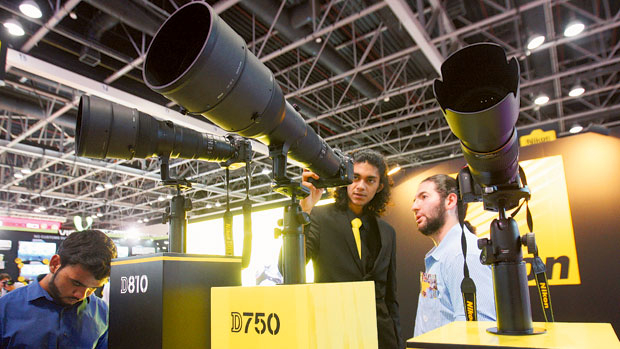
Dubai: Even though smartphones have killed point-and-shoot cameras, Nikon is still happy to produce them.
“The entry level point-and-shoot cameras are growing in certain countries, especially in Africa, even though it is slowing down due to the growth in smartphones,” Takashi Yoshida, managing director for Nikon Middle East and Africa, told Gulf News.
He said there is still a market for this segment but Nikon’s main focus is on Digital Single-Lens-Reflex (DSLR) in the Middle East rather than going for the latest technology that makes cameras light and compact.
“Social media photography will gain further traction this year due to the growth in WiFi cameras and offers huge growth potential,” he said.
That is why; he said that Nikon has launched the 24MP D750 at Gitex. The body costs Dh8,499. Nikon launched the 36.3MP full-frame D810 in the UAE last month. The company’s flagship product is D4S.
The overall DSLR segment has grown 20 per cent in the Gulf while Nikon’s business has grown 18 per cent.
“We are expecting to close the year above 18 per cent as the business peaks up for the next six months from October,” he said.
Pricing is becoming more and more stable now in the DSLR segment now, not like before “where prices fell very drastically.”
He said Nikon has four full frame cameras in the market – D610, D750, D810 and D4S.
“People are taking photos to load into social networking sites and that has forced camera makers to launch models with WiFi. Nikon is the only manufacturer which produces WiFi cameras from low-end (D3200) to high-end model (D4S),” he said.
When asked why Nikon is not keen on mirrorless cameras, he said that mirrorless cameras do not have popularity in this region. It is getting popular only in Japan and Far East countries.
“Some players are pushing mirrorless in the region but the trend is not there. It still occupies only a small percentage when compared to the total sales,” he said.
DSLR cameras use mirrors to reflect the image passing through the lens, which can be seen through the viewfinder. By eliminating the mirrors, the cameras become light and compact.
Mirrorless cameras sit between a compact camera and a DSLR.
In the Middle East, he said that people never appreciate the small size. They like to have a bigger size. They think “bigger is better and offers better image quality,” Yoshida said.












